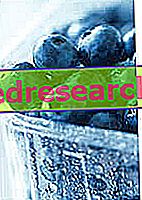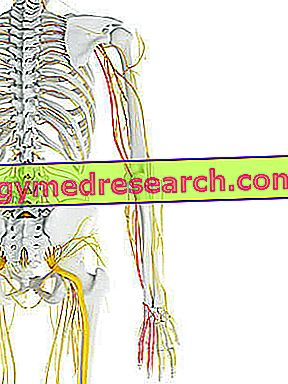What are
The anthocyanins, whose name derives from the union of the Greek words "antro kyanos" = blue flower, are colored pigments present in different flowers and common fruits.
From the chemical point of view we speak of anthocyanic glycosides.
A glycoside is a substance derived from the union of a sugar, called glycoon, with an organic molecule of another nature, called aglycone. In anthocyanins the non-sugary portion of the molecule is commonly called anthocyanidin.

Foods rich in anthocyanins
As mentioned at the beginning of the article, the anthocyanins are found in almost all the fruits and vegetables found in nature, to which they give the nuances of red and blue. Their coloring is in fact linked to the vacuolar pH (the vacuoles are vesicles containing reserve substances, including anthocyanins and other secondary metabolites). Similar to litmus paper, in an acidic environment the anthocyanins take on a reddish color; on the contrary, when the pH is high (basic environment) they express the various shades of blue.
Before explaining why anthocyanins are so important for human health, it is good to spend a few words on their function in the plant kingdom. In this regard, various hypotheses have been advanced; some, for example, believe that anthocyanins are essential for attracting, at first, pollinating insects on the flower, and, subsequently, animals on the fruit. Some authors attribute to these pigments the ability to filter harmful solar radiations; still others extend this hypothesis by attributing to anthocyanins a protective function against drought in moments of high illumination.
Anthocyanins in food
The richest natural sources of these substances are berries, aubergines, dark grapes and red beets.
Anthocyanins also abound in the flowers of mallow and carcadè, as well as in oranges, cherries, apples, strawberries and pears.
In general, the more their color (reddish or bluace) is intense and the greater is the precious load of anthocyanins.
Property
Antioxidant power
The anthocyanins, although not essential for human nutrition, exert a positive action on the whole organism. Thanks to their marked antioxidant properties, they are compared by some to a real natural antidote against aging. By rationalizing the miraculous terms of this statement, the most interesting property of the anthocyanins concerns the protective action on the microcirculation. For this reason, cranberry juice, which is the main natural source of anthocyanin glycosides, is often recommended to combat capillary fragility (cellulite, varicose veins, hemorrhoids); furthermore, thanks to its anti-edema action, it is very useful for solving water retention problems. Cranberry anthocyanins are also important for the treatment of fragility and capillary permeability of the eye. Recently, considerable media space is being given to a fruit even richer in anthocyanins, the maqui, typical of South America and renamed the fruit of eternal youth .
Antocyanic glycosides are attributed anti-inflammatory and anti-platelet aggregation properties which, together with the vasodilatory and antioxidant action, constitute a real cure for the entire cardiovascular system. An adequate consumption of foods rich in anthocyanins therefore represents one of the most valid protections against the negative effects induced by hypercholesterolemia.
Finally, the anthocyanins have a scavenger action (find waste) on free radicals and are therefore very important for the general well-being of the organism (protection from carcinogens) and to slow down the inevitable biological phenomenon of aging.



